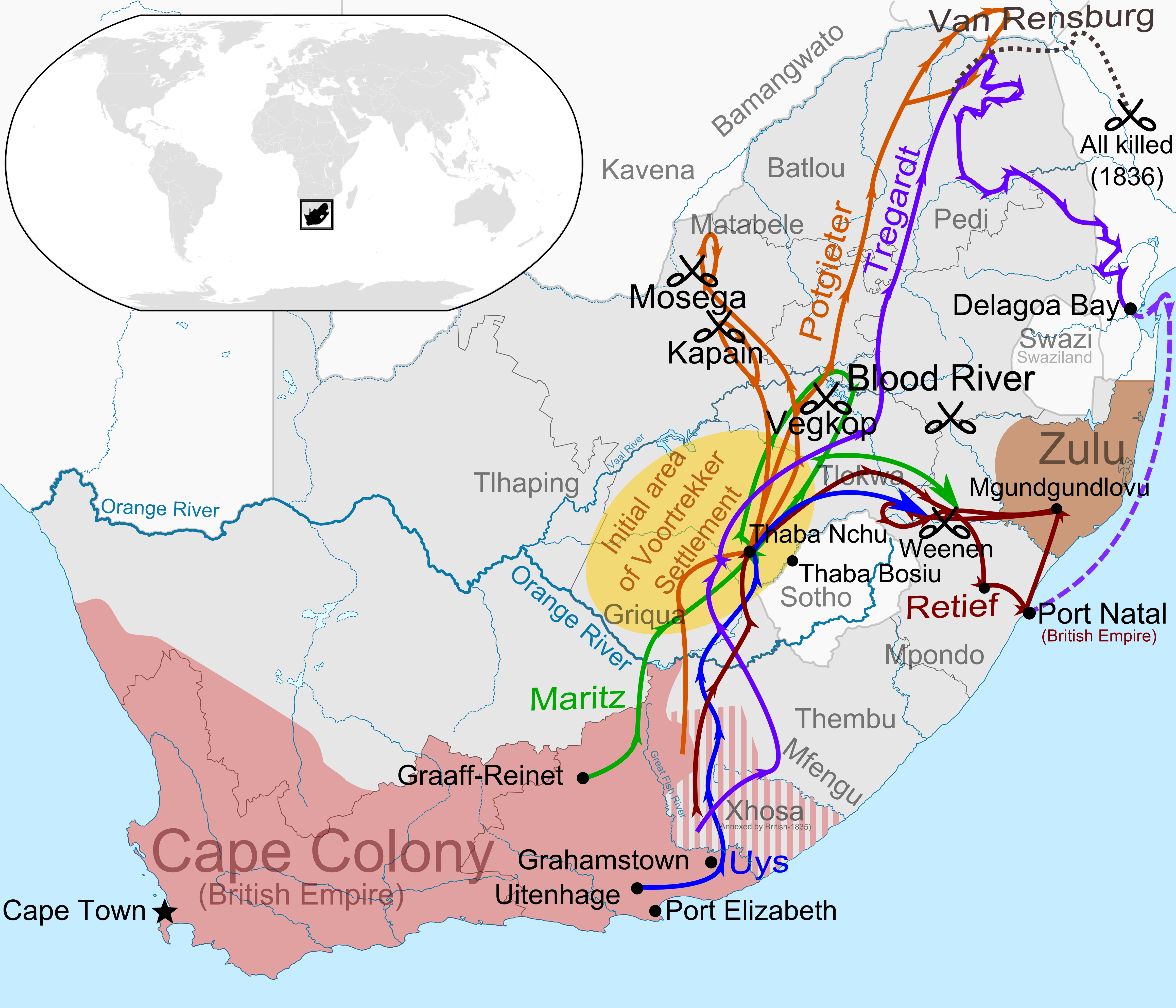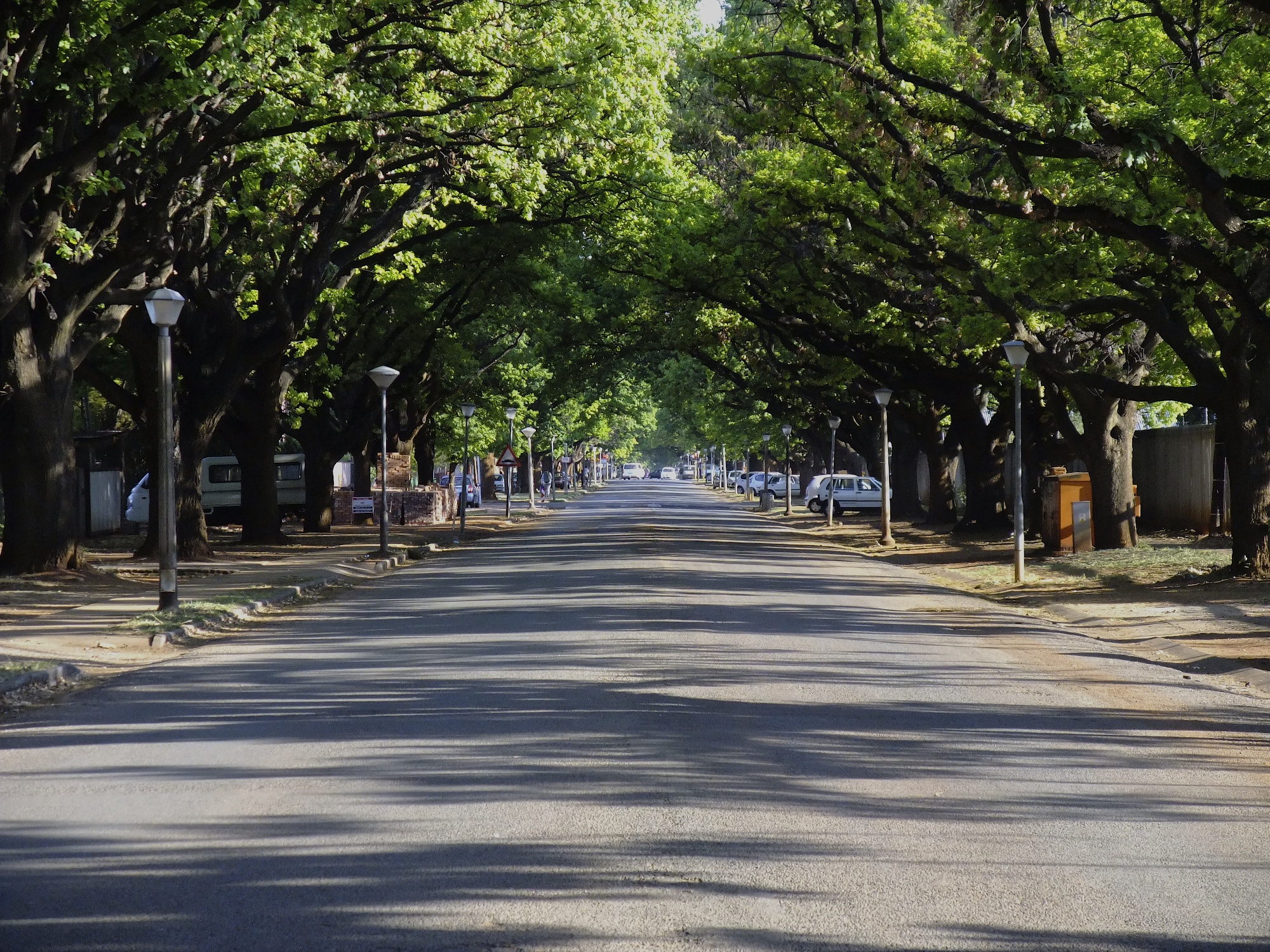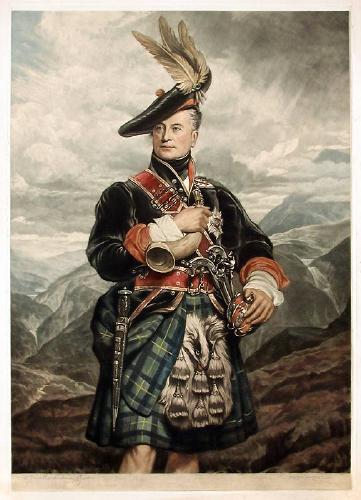|
Koos De La Rey
Jacobus Herculaas de la Rey (22 October 1847 – 15 September 1914), better known as Koos de la Rey, was a South African military officer who served as a Boer general during the Second Boer War. also had a political career and was one of the leading advocates of Boer independence. Early life Born on Doornfontein Farm in the Winburg District of the Orange Free State, Koos was the son of Adrianus Johannes Gijsbertus de la Rey and Adriana Wilhelmina van Rooyen. was a Boer of French Huguenot, Spanish and Dutch descent. His grandfather, a school teacher and the patriarch of the family in South Africa, came from Utrecht, Netherlands. After the Battle of Boomplaats, the family farm was confiscated by the British and the family trekked into the Transvaal and settled in Lichtenburg. As a child received very little formal education. The De la Rey family moved, this time to Kimberley after the discovery of diamonds. As a young man, de la Rey worked as a transport rider on the routes ... [...More Info...] [...Related Items...] OR: [Wikipedia] [Google] [Baidu] |
Winburg
Winburg is a small mixed farming town in the Free State province of South Africa. It is the oldest proclaimed town (1837) in the Orange Free State, South Africa and thus along with Griquastad, one of the oldest settlements in South Africa located north of the Orange River. It is situated where the N1 National Highway (which goes north to Johannesburg and south to Cape Town) meets the N5 National Route (which goes east to Harrismith). The nearest city, Bloemfontein, is 120 km away southwards via the N1. History A small group of 11 Voortrekker settlers, led by Andries Hendrik Potgieter, first arrived in the area of Winburg in 1835. They were able to buy access to the land between the Vaal and Vet rivers – virtually the entire northern part of what is now the Free State – from the local Bataung Chief, Makwana, in 1836, by promising protection from rival tribes and offering 42 head of cattle. Within a year, more than 1,000 settler families had gathered in the region ... [...More Info...] [...Related Items...] OR: [Wikipedia] [Google] [Baidu] |
Battle Of Boomplaats
The Battle of Boomplaats (also referred to as the Battle of Boomplaas) was fought near Jagersfontein at on 29 August 1848 between the British and the Voortrekkers. The British were led by Sir Harry Smith,Smith, Sir Harry. ‘’The Autobiography of Lieutenant-General Sir Harry Smith Baronet of Aliwal on the Sutlej.’’ Publisher: John Murray, Albemarle Street 190/ref> while the Boers were led by Andries Pretorius. The British were victorious after one Boer opened fire too early and betrayed their position. Background Sir Harry Smith assumed the role of Governor of the Cape in 1847 and begun to unravel the work of the previous governor Sir Peregrine Maitland, who had reached agreements with the Basotho and the Griqua leaders which would help maintain British control of the region between the Vaal and Orange Rivers. Smith declared to the Griqua leader Adam Kok that all rent of their land to colonists would be given to the British Crown as opposed to the Griqua leaders getting ... [...More Info...] [...Related Items...] OR: [Wikipedia] [Google] [Baidu] |
Battle Of Kraaipan
The Battle of Kraaipan was the first engagement of the Second Anglo-Boer War, fought at Kraaipan, South Africa on 12 October 1899. On the 11 October 1899 President Paul Kruger of the South African Republic in alliance with the Orange Free State declared war on the British. That night 800 men of the Potchefstroom and Lichtenburg commandos"The First Shots of the War – 12 October 1899" by Elria Wessels in KEUR, 2 October 1998. under General (one of General 's field generals) attacked and captured the British garrison and rail ... [...More Info...] [...Related Items...] OR: [Wikipedia] [Google] [Baidu] |
Paul Kruger
Stephanus Johannes Paulus Kruger (; 10 October 1825 – 14 July 1904) was a South African politician. He was one of the dominant political and military figures in 19th-century South Africa, and President of the South African Republic (or Transvaal) from 1883 to 1900. Nicknamed ''Oom Paul'' ("Uncle Paul"), he came to international prominence as the face of the Boer cause—that of the Transvaal and its neighbour the Orange Free State—against Britain during the Second Boer War of 1899–1902. He has been called a personification of Afrikanerdom, and remains a controversial figure; admirers venerate him as a tragic folk hero. Born near the eastern edge of the Cape Colony, Kruger took part in the Great Trek as a child during the late 1830s. He had almost no education apart from the Bible. A protégé of the Voortrekker leader Andries Pretorius, he witnessed the signing of the Sand River Convention with Britain in 1852 and over the next decade played a prominent role in the ... [...More Info...] [...Related Items...] OR: [Wikipedia] [Google] [Baidu] |
Piet Joubert
Petrus Jacobus Joubert (20 January 1831 – 28 March 1900), better known as Piet Joubert, was Commandant-General of the South African Republic from 1880 to 1900. He also served as Vice-President to Paul Kruger from 1881 - 1883. He served in First Boer War, Second Boer War, and the Malaboch War. Early life Joubert was born in the district of Prince Albert, British Cape Colony, a descendant of a French Huguenot who fled to South Africa soon after the revocation of the Edict of Nantes by Louis XIV. Left an orphan at an early age, Joubert migrated to the Transvaal, where he settled in the Wakkerstroom district near Laing's Nek and the north-east corner of the Colony of Natal. There he not only farmed with great success, but turned his attention to the study of the law. Political career The esteem in which his shrewdness in both farming and legal affairs was held led to his election to the Volksraad as member for Wakkerstroom early in the sixties, Marthinus Pretorius being then i ... [...More Info...] [...Related Items...] OR: [Wikipedia] [Google] [Baidu] |
Volksraad Of The South African Republic
The ''Volksraad of the South African Republic'' (English: "People's Council" of the South African Republic, Afrikaans: Volksraad van die Zuid-Afrikaansche Republiek) was the parliament of the former South African Republic (ZAR), it existed from 1840 to 1877, and from 1881 to 1902 in part of what is now South Africa. The body ceased to exist after the British Empire's victory in the Second Anglo-Boer War. The ''Volksraad'' sat in session in Ou Raadsaal in Church Square, Pretoria. In 1840, at the beginning of the Natalia Republic, an adjunct ''Volksraad'' was created in Potchefstroom for settlers west of the Drakensberg. The Potchefstroom ''Volksraad'' continued despite the Natalia_Republic#Annexation, British annexation of the Natalia Republic in 1843. It eventually passed the Thirty-three Articles, the precursor to the 1858 constitution (''Grondwet''), in 1849. In 1858 the ''Grondwet'' permanently established the ''Volksraad'' as the supreme authority of the nation. Initially a u ... [...More Info...] [...Related Items...] OR: [Wikipedia] [Google] [Baidu] |
Potchefstroom
Potchefstroom (, colloquially known as Potch) is an academic city in the North West Province of South Africa. It hosts the Potchefstroom Campus of the North-West University. Potchefstroom is on the Mooi Rivier (Afrikaans for "pretty river"), roughly west-southwest of Johannesburg and east-northeast of Klerksdorp. Etymology Several theories exist about the origin of the city's name. According to one theory, it originates from ''Potgieter'' + ''Chef'' + ''stroom'' (referring to Voortrekker leader and town founder Andries Potgieter; "chef" indicates the leader of the Voortrekkers, and "stroom" refers to the Mooi River). Geoffrey Jenkins writes, "Others however, attribute the name as having come from the word 'Potscherf', meaning a shard of a broken pot, due to the cracks that appear in the soil of the Mooi River Valley during drought resembling a broken pot". M. L. Fick suggests that Potchefstroom developed from the abbreviation of "Potgieterstroom" to "Potgerstroom", whic ... [...More Info...] [...Related Items...] OR: [Wikipedia] [Google] [Baidu] |
Piet Cronjé
Pieter Arnoldus "Piet" Cronjé (4 October 1836 – 4 February 1911) was a South African Boer general during the Anglo-Boer Wars of 1880–1881 and 1899–1902. Biography Born in the Cape Colony but raised in the South African Republic, Cronjé had a distinctive appearance, being short with a black beard and was reputed to have considerable personal courage. He made his reputation in the First Boer War, besieging the British garrison at Potchefstroom. He was unable to force their surrender until after the conclusion of the general armistice, and was at this time accused of withholding knowledge of this armistice from the garrison. Cronjé was in command of the force that rounded up Leander Jameson at Doornkop at the conclusion of the Jameson Raid on 2 January 1896. During the Second Boer War, Cronjé was general commanding in the western theatre of war. He began the sieges of Kimberley and Mafeking. At Mafeking, with a force between 2,000 and 6,000 he laid siege ... [...More Info...] [...Related Items...] OR: [Wikipedia] [Google] [Baidu] |
Sekhukhune
Sekhukhune I (Matsebe; circa 1814 – 13 August 1882) was the paramount King of the Marota, more commonly known as the Bapedi, from 21 September 1861 until his assassination on 13 August 1882 by his rival and half-brother, Mampuru II. As the Pedi paramount leader he was faced with political challenges from boer settlers, the independent South African Republic (Dutch: ''Zuid-Afrikaansche Republiek''), the British Empire, and considerable social change caused by Christian Missionaries, Christian missionaries. Sekhukhune was the son of Sekwati, Sekwati I, and succeeded him upon his death in 20 September 1861 after forcibly taking the throne from his half-brother and the heir apparent Mampuru II. His other known siblings were; Legolwana, Johannes Dinkwanyane, and Kgoloko. Sekhukhune married Legoadi IV in 1862, and lived at a mountain, now known as or Leolo Mountains which he fortified. To strengthen his kingdom and to guard against European colonisation, he had his young subjects wor ... [...More Info...] [...Related Items...] OR: [Wikipedia] [Google] [Baidu] |
Dutch Reformed Church In South Africa (NHK)
The Dutch Reformed Church in Africa (, abbreviated NHKA) is a Reformed Christian denomination based in South Africa. It also has congregations in Namibia, Botswana, Zambia and Zimbabwe. Along with the Dutch Reformed Church in South Africa (NGK) and the Reformed Churches in South Africa, the NHKA is one of the three Dutch Reformed sister churches of South Africa. The NHKA retains the old Nomenclature ''Nederduitsch'', the word originally referring to the Dutch language. The word refers to the Low Saxon language today. The Dutch language remained the official language of the church until 1933 when the church started functioning almost exclusively in Afrikaans. History Origins in the Cape Colony The Dutch Reformed Church was introduced to South Africa by the Dutch East India Company's settlement at Cape Town in 1652. The first formal congregation was established in 1665 under the jurisdiction of the '' classis'' (presbytery) of Amsterdam. Despite the permanent takeover of the Cape ... [...More Info...] [...Related Items...] OR: [Wikipedia] [Google] [Baidu] |
Dirk Van Der Hoff
A dirk is a long bladed thrusting dagger.Chisholm, Hugh (ed.), ''Dagger'', The Encyclopædia Britannica, 11th ed., Vol. VII, New York, NY: Cambridge University Press (1910), p. 729 Historically, it gained its name from the Highland Dirk (Scots Gaelic "Dearg") where it was a personal weapon of officers engaged in naval hand-to-hand combat during the Age of SailO'Brian, Patrick, ''Men-of-War: Life In Nelson's Navy'', New York: W.W. Norton & Co., (1974), p. 35 as well as the personal sidearm of Highlanders. It was also the traditional sidearm of the Highland Clansman and later used by the officers, pipers, and drummers of Scottish Highland regiments around 1725 to 1800 and by Japanese naval officers. Etymology The term is associated with Scotland in the Early Modern Era, being attested from about 1600. The term was spelled ''dork'' or ''dirk'' during the 17th century,Head, T.F. ''The Concise Oxford Dictionary of English Etymology'' Oxford University Press (1996) presumed relate ... [...More Info...] [...Related Items...] OR: [Wikipedia] [Google] [Baidu] |
Kimberley, Northern Cape
Kimberley is the capital and largest city of the Northern Cape province of South Africa. It is located approximately 110 km east of the confluence of the Vaal and Orange Rivers. The city has considerable historical significance due to its diamond mining past and the siege during the Second Anglo-Boer war. British businessmen Cecil Rhodes and Barney Barnato made their fortunes in Kimberley, and Rhodes established the De Beers diamond company in the early days of the mining town. On 2 September 1882, Kimberley was the first city in the Southern Hemisphere and the second in the world after Philadelphia, Pennsylvania in the United States to integrate electric street lights into its infrastructure. The first stock exchange in Africa was built in Kimberley, as early as 1881. History Discovery of diamonds In 1866, Erasmus Jacobs found a small brilliant pebble on the banks of the Orange River, on the farm ''De Kalk'' leased from local Griquas, near Hopetown, which was h ... [...More Info...] [...Related Items...] OR: [Wikipedia] [Google] [Baidu] |








